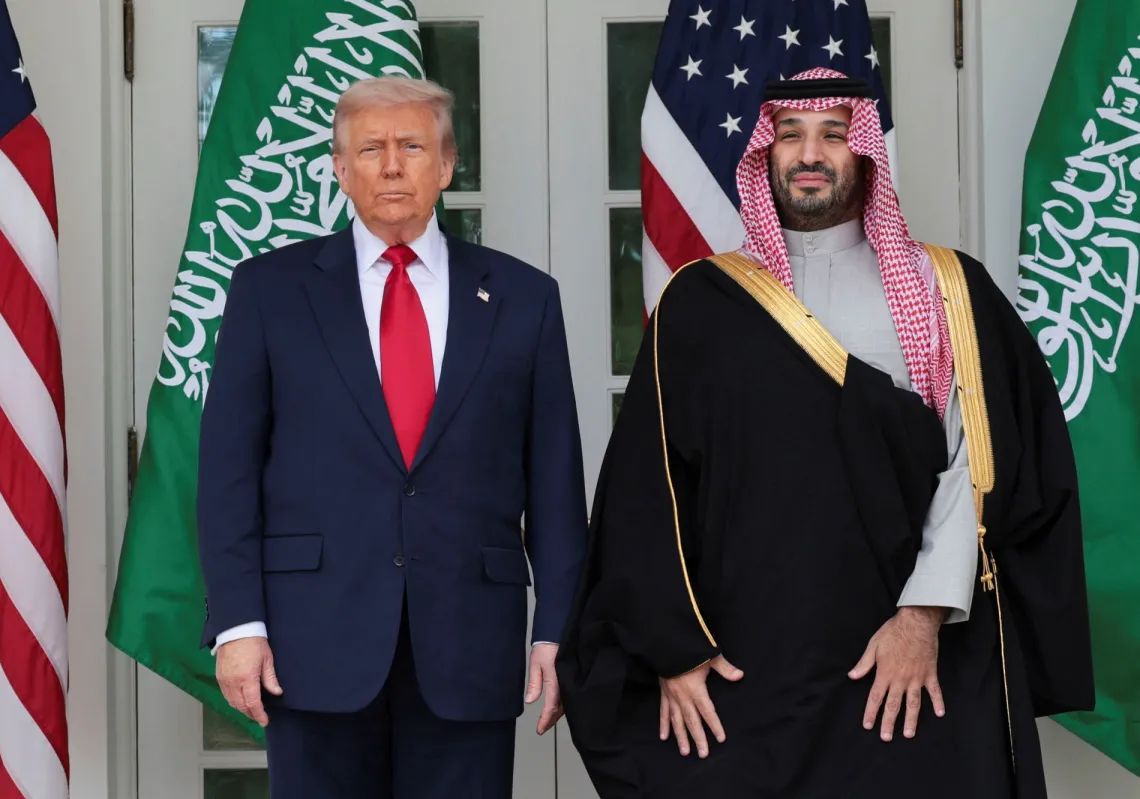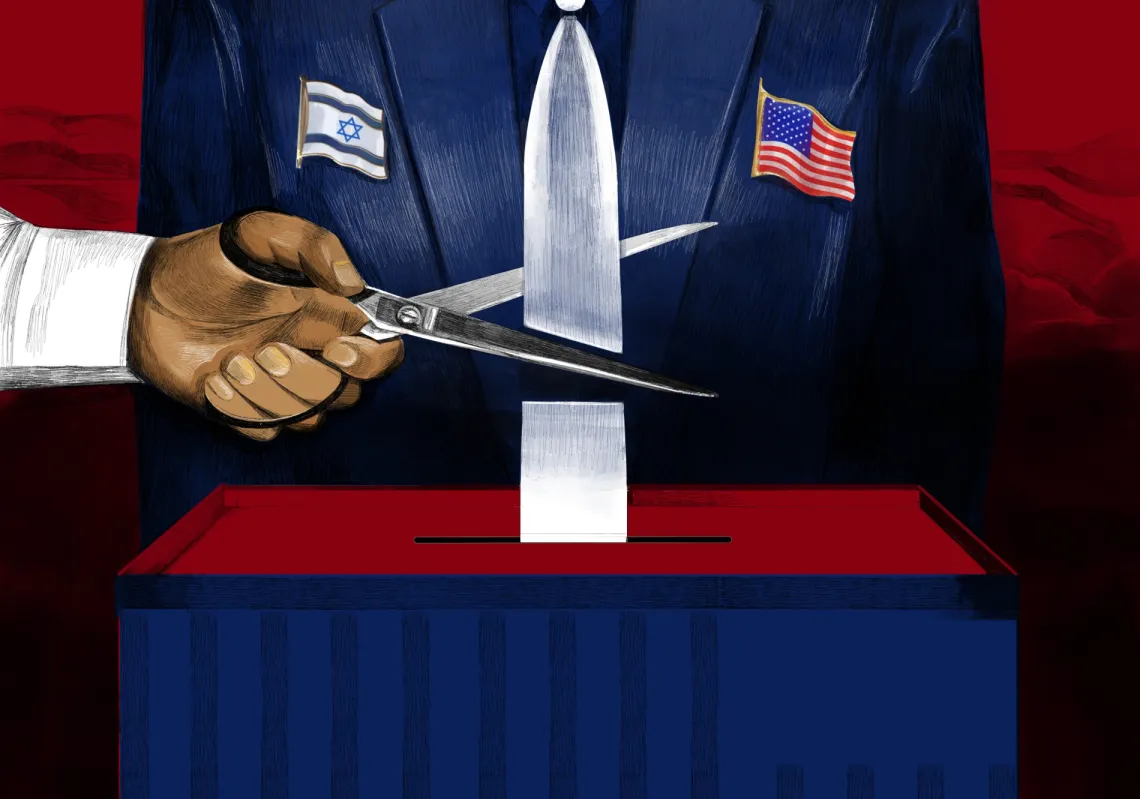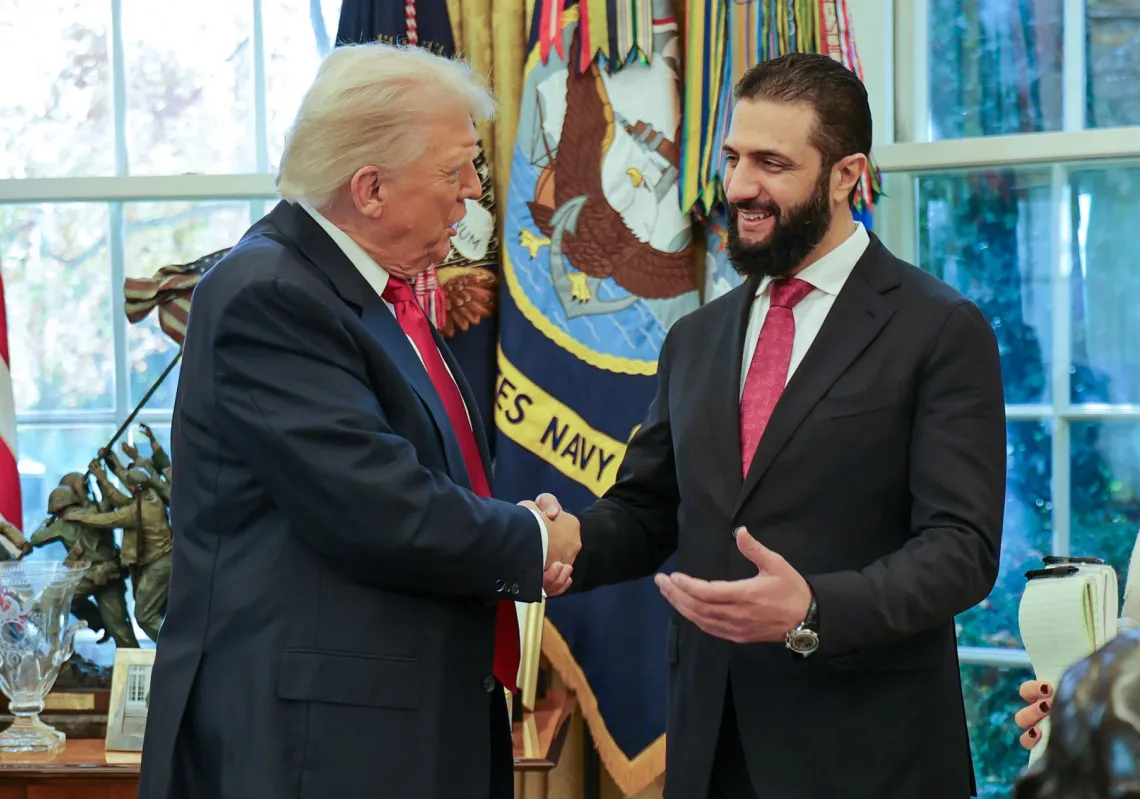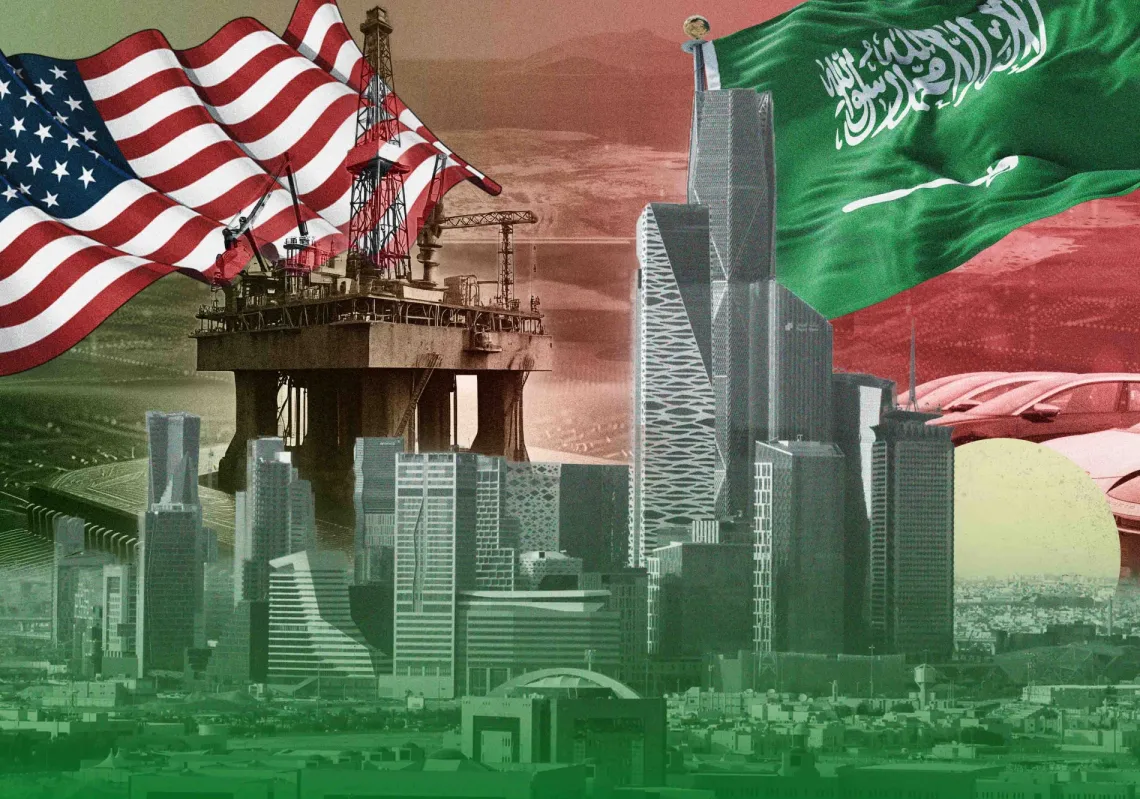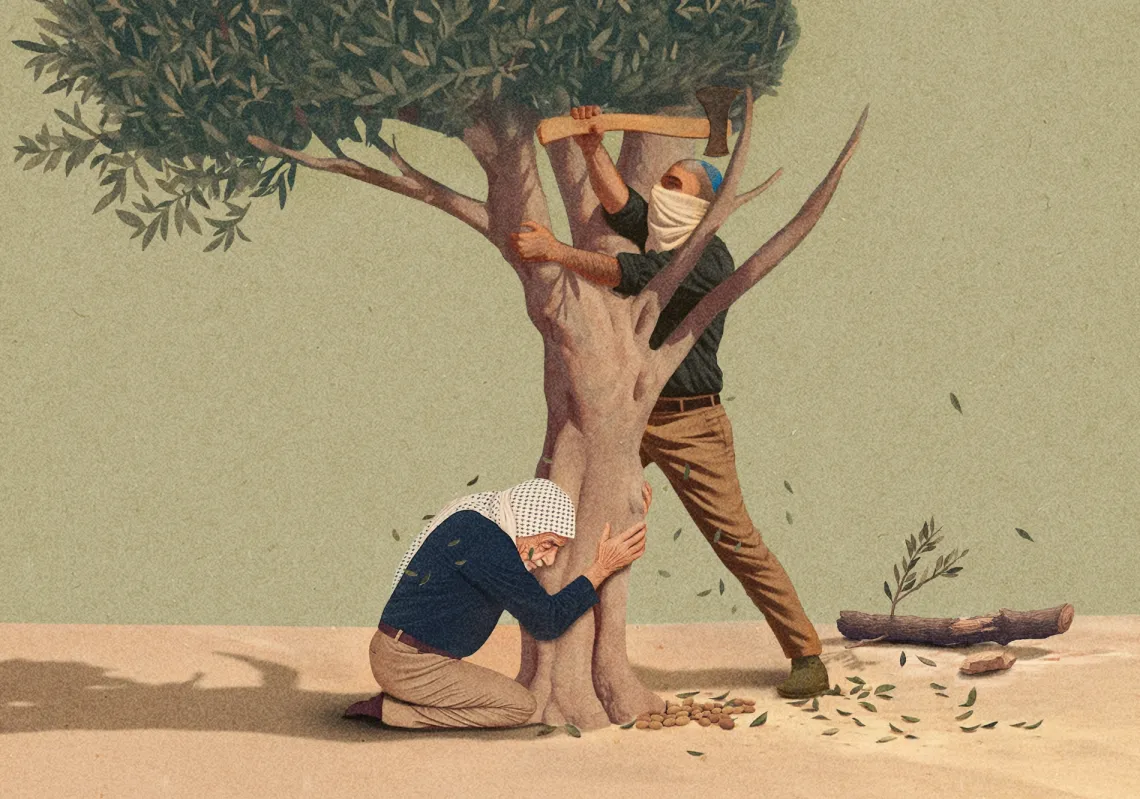 Hafed Al-Droubi in his studio in Baghdad in 1952. (Courtesy of Mina Al-Droubi)[/caption]
Hafed Al-Droubi in his studio in Baghdad in 1952. (Courtesy of Mina Al-Droubi)[/caption]
Displayed in the British Museum’s Islamic world gallery is a drawing by Hafed Al-Droubi, my grandfather and one of the pioneers of Iraq’s modern art scene. The ink-on-paper sketch, entitled The Goal, depicts four men climbing up a ladder, scrambling to reach the top. I had a sense of déjà vu when I stood in front of the drawings recently: not so long ago, the picture was hung on the wall in my living room. I felt as though I was back home, sitting down on the sofa gazing at it. Yet in the museum, every time I looked more closely, something new would pop up that I hadn’t noticed before.
Since the day I was born, I have been surrounded by the colorful paintings and vivid stories of my grandfather. One particular tale that I kept hearing from my grandmother about The Goal was that it was influenced by the death of an Iraqi president, Abdel Salam Aref, who died in a plane crash in 1966. The plane was believed to have been sabotaged by Ba'athist members of the Iraqi military. The four individuals climbing the ladder represent the spirits of those who died in the crash. They struggle, in competition with one another, to get to the top of the ladder. Their spirits were in transit, in Barzakh—purgatory. My grandfather believed that souls stuck in purgatory were dying of thirst. This would explain their rush to get to the top of the ladder, where there was water. Because my grandfather was neither a political man nor a religious one, I was struck by the huge influence this political event had had on his art at the time. It is particularly unexpected because he always had a big sign at home and in his various studios stating: “No religious or political talk allowed.” He considered himself to be an artist, and nothing more.
[caption id="attachment_55244791" align="alignright" width="178"]
 The Goal by Hafed Al-Droubi[/caption]
The Goal by Hafed Al-Droubi[/caption]
Venetia Porter, who curates the latest exhibition at the Islamic world gallery, “Boushra Almutawakel to Michael Rakowitz: recent acquisitions of works by Arab artists,” explained why the British Museum had chosen this particular piece. “This acquisition really compliments the work that we have already been doing, which is collecting modern contemporary artists [from] right across the Middle East. One of the things I’ve been thinking about doing is collecting the work of modernists arts like Hafed Al-Droubi, because you can’t really understand the contemporary art that is being produced by the artists today unless you understand where they fit.” She added that it was “a huge honor for us to have works by Hafed Al-Droubi in the British Museum; he’s an extremely important artist of the modernist period.”
Al-Droubi’s work is widely considered to be quite advanced for its time, as it incorporates a mixture of different styles ranging from impressionism to cubism. Returning to his home city, Baghdad, in the 1950s after having studied art in Europe, Al-Droubi sought to conceive Iraqi modern art. He soon earned a reputation as the ‘Baghdadi Artist.’ What distinguished Al-Droubi from other artists in the region was his early encounter with European art movements while studying at the Academy of Rome in the 1930s. His studies were interrupted by the start of the Second World War, when he returned to Baghdad, where it was safer—a reality that is almost inconceivable today. In 1947 he earned a scholarship to continue his studies in London at Goldsmiths College, graduating in 1950 with a degree in Art Studies. He then returned to Baghdad, where he opened the first Iraqi freelance art studio. Al-Droubi also played a vital role in the development of arts education in Iraq: his studio catered to young artists, and he went on to become the dean of Iraq’s Academy of Fine Arts.
Al-Droubi’s paintings and sketches are characterized by his interest in scenes of daily life, ranging from Iraq’s markets and city nightlife to more rural scenes. He introduced new concepts to art in Iraq, as his paintings not only portrayed the visible, but also reflections of his mind and soul. My grandfather’s work reflected his feelings for his beloved Baghdad.
Describing his style, Porter commented that “he used this cubist style to paint Iraqi scenes. I think it’s incredibly interesting as it’s a fusion between the two worlds. He didn’t copy cubism; he created something new. His work is very striking.”
Al-Droubi’s goal was to inspire artists to achieve their finest. He had a great sense of passion, commitment and spontaneity to create timeless pieces of art that will be passed on for generations. He is not only my grandfather: he is the grandfather of Iraq’s modern art movement.
[divider]
Boushra Almutawakel to Michael Rakowitz: recent acquisitions of works by Arab artists runs until October 2, 2013 in Room 34 at the British Museum.



